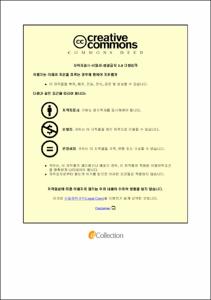백서 아킬레스건의 콜라겐분해효소(collagenase) 유도 손상 모델과 창형손상(window defect) 모델의 검증 및 비교
- Abstract
- Objective Selecting an appropriate animal model is important for animal studies. The objective of the study was to validate and compare rat collagenase induced Achilles tendon injury models and rat window defect induced Achilles tendon injury models.
Method Fifty-four Achilles tendons from twenty-seven 10-week-old male Sprague Dawley rats were randomly assigned to three groups: (1) collagenase group; (2) window defect group; and (3) normal control group. Ten microliters of type I collagenase double injection was administered to the Achilles tendon of the collagenase group. A defect (0.6 mm × 6 mm) was generated at the tendon insertion site of the calcaneus of the window defect group. Cross-sectional areas (CSAs), biomechanical properties, and histological characteristics were assessed at 2 and 4 weeks following each tendon injury.
Results The CSAs in both collagenase and window defect groups increased at 2 weeks, but decreased at 4 weeks. CSAs of both injury models were significantly larger than those of the normal group at both 2 and 4 weeks. CSAs of the collagenase group were significantly larger than those of the window defect group at 4 weeks. Biomechanical properties of both injury models decreased at 2 weeks and increased at 4 weeks. Ultimate failure load, stiffness, and maximal stress of both groups were significantly lower than those of the normal group at 2 weeks. At 4 weeks, ultimate failure load and stiffness in the collagenase group were not significantly lower than those in the normal group. Both models displayed diffuse tendinopathy in all H & E stained slides. Modified Watkins scores in the window defect group were significantly lower than those in the collagenase group at 4 weeks. Chondrocyte-like cells and lacunae were found in both groups at both time points. There were no intergroup differences in the compositions of collagen type I, collagen type III, tenascin C and BMP 2.
Conclusion Both collagenase and window defect-induced rat Achilles tendon injury models are suitable for tendon injury studies. Although there was no marked difference between these two models, the window defect model showed a tendency towards slower recovery.|목적 동물 실험을 포함한 힘줄 연구에서 적절한 동물 모델을 선택하는 것은 중요하다. 본 연구는 백서 아킬레스건의 콜라겐분해효소(collagenase) 유도 손상 모델과 창형손상(window defect) 모델의 적절성을 각각 검증하고, 두 모델을 비교해 보고자 하였다.
방법 27마리의 10주령 백서에서 총 54개의 아킬레스건을 얻어, (1) 콜라겐분해효소군 (2) 창형손상군 (3) 정상군의 3군으로 18개씩 임의 배정하였다. 콜라겐분해효소군은 아킬레스건에 10 ㎕의 제 1형 콜라겐분해효소를 2회 주사하였고, 창형손상군은 종골 접착부로부터 폭 0.6mm, 길이 6mm의 창형 절제 부위를 만들었다. 모델 형성 후 2주 및 4주가 지난 시점에 힘줄의 단면적, 생역학적, 조직학적, 면역조직화학 평가를 시행하고, 웨스턴블롯 검사도 시행하였다.
결과 힘줄 단면적은 2주와 4주 모두에서 콜라겐분해효소군과 창형손상군이 모두 정상군에 비해 유의하게 컸다. 두 모델군 비교 시 4주에는 콜라겐분해효소군이 창형손상군에 비해 단면적이 유의하게 컸다. 2주 시점에는 최종 파열력, 강성, 최대 스트레스 수치가 두 모델군이 정상군에 비해 유의하게 낮았고, 4주 시점에 회복되며 증가하였다. 콜라겐분해효소군은 4주 시점에 최종 파열력과 강성이 더 이상 정상군보다 유의하게 낮지 않았다. 조직학적 평가에서 두 모델군 모두에 전반적인 힘줄병증의 특징이 나타났고, 모든 조직 슬라이드에서 연골세포양 세포들과 열공이 관찰되었다. 수정된 왓킨 점수는 4주 시점에는 창형손상군이 콜라겐분해효소군보다 유의하게 낮았다. 두 모델군의 면역조직화학 평가 및 웨스턴블롯 검사로 확인한 콜라겐 I 형, 콜라겐 III 형, 테나신 C, BMP 2 단백질의 양은 두 모델군에서 모두 유의한 차이를 보이지 않았다.
결론 본 연구를 통해 백서 아킬레스건의 콜라겐분해효소 유도 손상과 창형손상 모델은 모두 힘줄손상 연구에 사용하기 적합하다는 것을 검증하였다. 두 모델 비교 시 둘 간에 큰 차이는 없었으나 창형손상 모델의 재생 속도가 더딘 경향을 보였다.
- Issued Date
- 2021
- Awarded Date
- 2021-02
- Type
- Dissertation
- Keyword
- Models; Animal; Rats; Achilles tendon; Collagenase
- Alternative Author(s)
- JaYoung Kim
- Affiliation
- 울산대학교
- Department
- 일반대학원 의학과
- Advisor
- 최경효
- Degree
- Doctor
- Publisher
- 울산대학교 일반대학원 의학과
- Language
- eng
- Rights
- 울산대학교 논문은 저작권에 의해 보호받습니다.
- Appears in Collections:
- Medicine > 2. Theses (Ph.D)
- 파일 목록
-
-
Download
 200000363733.pdf
기타 데이터 / 1.4 MB / Adobe PDF
200000363733.pdf
기타 데이터 / 1.4 MB / Adobe PDF
-
Items in Repository are protected by copyright, with all rights reserved, unless otherwise indicated.